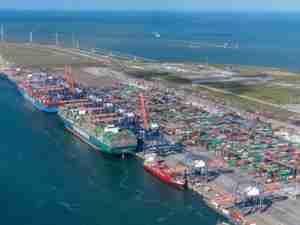“As ships get larger, it is critical that the Port of Baltimore have a 50-foot berth by 2014 when the completed expansion of the Panama Canal will bring more cargo and larger vessels from Asia to the US East Coast,” said MPA Executive Director James J. White. “We feel strongly that, at this time, having a private partner contribute significant capital investment is the best option for us to go forward.”
The MPA has employed Public Financial Management of Orlando, Florida to assist it with identifying potential private partners. The MPA is seeking interested parties with good qualifications, including experience in marine terminal management, financial resources, and the ability to build the 50-foot berth.
Under a public-private partnership, the MPA would lease the 200-acre Seagirt Marine Terminal, which opened in 1990, exclusively to a private entity. That private partner would invest in a new berth, cranes, and other infrastructure at Seagirt, and provide a revenue stream to the MPA. The MPA would continue to own Seagirt.
The private partner would be required to meet a minimum annual cargo guarantee and would also pay the MPA for existing terminal and waterside improvements to Seagirt. In exchange, the MPA will grant the private partner a long-term lease to operate Seagirt exclusively during the full term of the lease. The private partner would be awarded the portfolio of business currently under contract to the MPA/Maryland International Terminals.
Statements of qualifications will be due to the MPA next month. The MPA will review the qualifications and develop a short list of potential bidders that best fits the ultimate goals for this project. The MPA expects to make a final recommendation to the Maryland Port Commission and Board of Public Works by the end of 2009.










